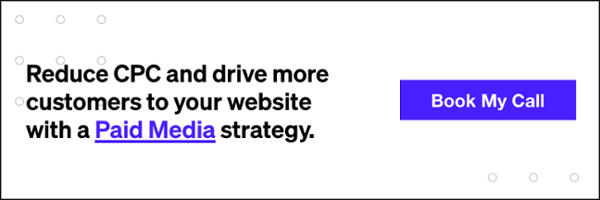How to Outsmart Your Competition in AdWords
SEM has traditionally been an extremely dynamic landscape that is constantly evolving and changing. Paid search and PPC (pay-per-click advertising) campaign managers need to learn to adapt to that competitive landscape and have a good understanding of AdWords functionality. It’s often said that competition is good for your business, after all, it pushes you to be better. Today I will outline a few strategies that you can use to put your competitive analysis to work, take away impression share from your competitors, and turn your competitor’s activity into new customers for your brand!
Gmail Ads On Competitor Domains
Gmail ads or Gmail Sponsored Promotions allows your ads to appear at the top of the Promotions tab of a users’ email account. This is extremely powerful when targeting competitor domains and competitor brands. For example, if you were competing with Toyota, you could target its brand name as part of a Gmail ad campaign so that every time a Toyota newsletter arrives in someone’s Gmail inbox, your ad ends up in its inbox as well.
Target Competitor’s Audience Through The GDN
Google’s Custom Affinity Audiences are another great way to beat the competition. They allow you to reach people based on their specific interests as they browse pages, apps, channels, videos, and content across YouTube and the Google Display Network as well as on YouTube search results. This is an outstanding means of reaching beyond the limitations of advertising through the search engine and a great way to diversify the marketing strategy for your ppc campaign. I recommend targeting the home page of your competitor.
Related: Google Display Network (GDN) Best Practices
AdWords will then figure out the brand trademarks and the behavior of the people who visit and are interested in that domain name. To help increase efficiency, try implementing custom affinity audience targeting with other display targeting options such as contextual keywords to refine the custom audience size.
Blocking Competitor IP Addresses
Keeping track of what your competitors are doing on the SERP is a must for SEM marketers. As such, competitors are likely keeping track of your brand and your strategies in the same way! Blocking their IP address can help you cut down on the amount of competitor-driven clicks and competitor activity. Additionally, this allows you to partially conceal your strategies making it more difficult for competitor marketers to do their job.
- You will need to find an email address from the competitor in order to do this. Once you have it, you can easily find the IP address by doing some digging into the email header.
- Here is an extremely helpful article on how to find IPs in emails.
Once you have identified a list of IPs, you can easily exclude these in the IP address exclusion section of the campaign settings.
Segment, Segment, Segment!
The more granular and specific you can get in terms of ad copy and keyword targeting will make a big difference when targeting competitors. Take the time to categorize your competitors so that you can create ads that speak directly to your strengths and their weaknesses. Running a comprehensive competitive analysis ahead of time will truly payoff as you begin to integrate some of these tactics into your advertising and marketing strategy.
Related: AdWords Agency Checklist
On a recent campaign restructure for a national window treatments brand, I broke out their competitors into the following categories: In-Home Model, Home Store/Big Box, Online Catalog/Retailer and Brand. Each of these segments contains its own ad copy and keyword targeting which was designed around the strengths and weaknesses of each category. In the end, we experienced higher average position and higher impression share for each respective ad group!
Utilize The Outranking Share Flexible Bid Strategy
There is an option in the settings section of AdWords campaigns that allows you to build a flexible bid strategy. This aims to place your ads above the competitor whose brand you are targeting for even greater visibility. This also allows you to optimize bids in real-time and be even more aggressive in your attempt to win back customers.
A Word on Quality Score
Solely targeting your competitors brand keywords is typically one of the more ineffective and costly strategies. Additionally, the overall impression share that one could potentially steal is minimal when it comes to targeting competitor brands. This is because your quality score will almost always be lesser than your competitors. Why is that? Because AdWords is able to identify when a website represents a particular entity and when it does not. These low quality scores will typically result in very high CPCs as well as a poor Ad Rank. It pays off to do additional keyword research to identify more product-specific competitor keywords to incorporate in your campaigns.
I hope these tips and tricks will help you get in front of your competitor’s customers and eventually convert them to your customers!


















